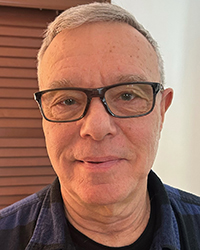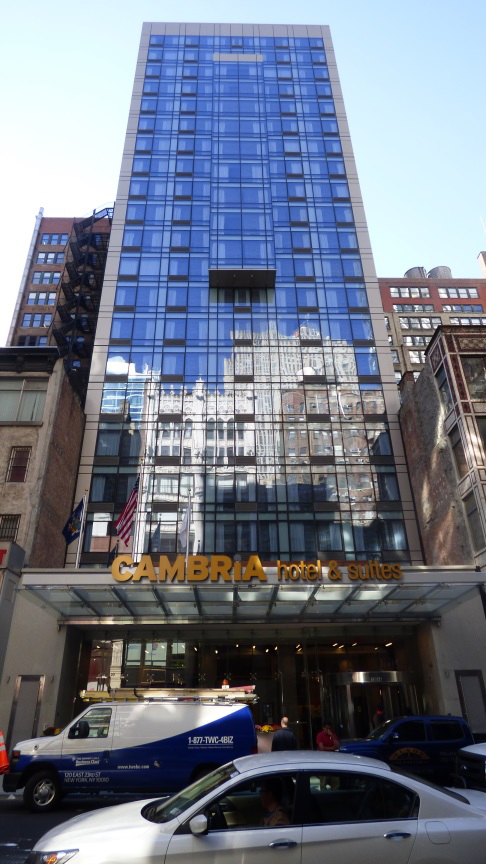News:
Green Buildings
Posted: September 27, 2010
Bank of America Tower achieves LEED Platinum: Tishman plays key role
One Bryant Park LLC, comprised of owners The Durst Org. and Bank of America, N.A., has achieved the U.S. Green Building Council's (USGBC) highest LEED certification - Platinum - for the core and shell (essentially the entire building excluding interiors) of the Bank of America Tower at One Bryant Park. The 55-story office building - one of the first in the world designed and constructed to Leadership in Energy and Environmental Design (LEED) Platinum standards - was developed by Durst, designed by Cook + Fox, and built by Tishman Construction Corp., who had to meet several challenges as it constructed the 2.1-million s/f skyscraper.
"This is a great milestone for New York City, for The Durst Organization, for our partner Bank of America, and for sustainable design and construction," said Douglas Durst, co-president of Durst. "With its energy-efficient co-gen plant, its ice storage capabilities, its graywater- and stormwater-retention systems, and other sustainable features, this is a groundbreaking achievement of which we can all be proud. We thank Tishman Construction for advising on constructability issues early in the process, for always finding a way to resolve sustainable building problems efficiently, and for diligently ensuring that LEED Platinum standards were met throughout the construction process."
"We are gratified that Durst and Bank of America chose Tishman to manage construction of this complex, pace-setting LEED-Platinum tower," said Daniel Tishman, chairman and CEO of Tishman and chairman of the Natural Resources Defense Council. "We were pleased to work with them in their sustainability pursuits for the design, development and construction of this class A corporate facility."
One Bryant Park, which is two-thirds occupied by Bank of America, is a crystalline tower located at the corner of Sixth Ave. and West 42Â St. Built into the podium of the building is Henry Miller's Theatre, recently renamed the Stephen Sondheim Theatre, a 1,055-seat Broadway playhouse and one of the city's first "green theaters." It was designed and built to LEED Gold standards.
Tishman assisted Durst and Bank of America in achieving a LEED Platinum rating for the new skyscraper by taking the following steps:
* Teaching subcontractors green building methods.
1. Tishman made sure subcontractors had absolute clarity about the building's green specifications in the bid phase. This strategy brought bids in at more competitive rates because subcontractors didn't have to "leave an allowance" in the numbers to cover green challenges they weren't familiar with.
2. Tishman made sure subcontractors were aware of the difference between the LEED specifications for materials fabricated offsite and materials used onsite (paints, glues, etc.) because the criteria for offsite materials are lower. Materials used in the shop cannot necessarily be used in the field.
2. Tishman taught subcontractors how to track and report the criteria for the regionally sourced materials (by weight and dollar value) so that the information could be summarized and reported accurately to the USGBC.
* Selecting green materials: Tishman required early submission of green materials so they could be approved concurrently by both the architect and the LEED expert. This strategy saved time and money.
* Protecting indoor air quality:
1. Tishman personnel implemented an Indoor Air Quality (IAQ) plan during construction so that workers had fresh air and ventilation in every area of the building during every phase of the project. The IAQ plan also improved the quality of air for the building's tenants.
2. Tishman ensured that subcontractors shielded both ends of any ductwork to be installed, so when the ducts were delivered, they were not exposed to water- or airborne-contaminants.
* Preventing mold: Tishman prevented mold and mildew by making sure subcontractors kept materials out of wet areas and off the floor.
* Coordinating the building design for co-gen plant: The 4.6-megawatt co-gen plant that Tishman installed in One Bryant Park provides 65% of the building's energy and is a key component in achieving enough points to win LEED Platinum certification. Tishman was part of the design process, providing advice during constructability reviews as to how to coordinate the design of the building around the co-gen, what structural reinforcements would be implemented, how to coordinate it into the structure, how to install the mechanical, electrical and ventilation systems around it, and how to handle the logistics of equipment delivery and installation.
* Conserving water: The stormwater and graywater-retention and recycling systems were an important component on the LEED scorecard. Tishman had to figure out how to implement the complex designs.
* Managing complexities: Tishman also worked with the owner and the design team on cost issues, scheduling, logistics, constructability and value engineering.
During construction, Tishman had to constantly emphasize to subcontractors not familiar with sustainable construction techniques that compliance was mandatory. Eventually subcontractors bought into the concept and started complying with the reporting and submission requirements for LEED certification.
The Building Incorporates Extensive Overall LEED Features
One Bryant Park incorporates overall environmental technologies and sustainable features, including:
Occupant Health/Indoor Air Quality
*Air filtration removes 95% of particulates. Most outside air is taken in at 800 ft above street level.
*Natural daylight and views are maximized through higher 9'6" ceilings and floor-to-ceiling windows glazed with extremely transparent, low-iron glass.
*State-of-the-art under-floor ventilation system allows for individual climate control through in-floor air diffusers. Floor-by-floor air handling units provide more even, efficient, and healthy cooling and fresh air.
*The fabrication, delivery, on-site storage, and installation of air handling systems were closely monitored by the construction team to ensure optimum air quality was consistently maintained.
*A continuous air monitoring system tracks CO2 , CO, Volatile Organic Compounds (VOCs) and small particulates, and ensures consistently high quality of ventilation air.
Water
*Graywater system captures and re-uses nearly all 48 inches of annual precipitation, as well as cooling coil condensate and sink water generated on site.
*Water savings of approximately 7.7 million gallons per year will be achieved through graywater treatment and re-use, waterless urinals, and low-flow plumbing fixtures. The waterless urinals save 3.4 million gallons of potable water annually. Collection tanks staged throughout building take advantage of gravity to transport graywater.
*Nearly zero stormwater discharged to city sewer system.
*Because the building's foundation is deepest in midtown Manhattan, approximately 5,000 gallons of groundwater per day collects from neighboring sites and is captured and reused in the graywater system.
*Local water supply was protected during building construction.
Energy
*High performance curtain wall reduces solar heat gain through low-emissivity ("low-e") glass and heat-reflecting ceramic frit; building façade reduces air infiltration.
*Higher ceilings and highly transparent glass reduce artificial lighting requirements. Occupancy sensors control lighting of base building spaces. Automated daylight dimming system in lobby, Durst, and Bank of America spaces reduces lighting and cooling energy by up to 10%.
*4.6 megawatt on-site co-generation (aka Combined Heat and Power) system provides approximately 65% of building's annual electricity requirements, and reduces daytime peak electricity demand by 30%. The system also generates most of the heating energy for the building.
*Waste heat from co-generation is used to provide heat in winter and cooling in summer through an absorption chiller.
*Ice storage system provides approximately 25% of the building's annual cooling requirements, reducing daytime peak loads on city's electricity grid. At night, excess electricity from co-generation system is used to produce ice, which is melted during the day to supplement the cooling system.
Materials
*91% of all construction and demolition waste was recycled or otherwise diverted from landfill. Trade contractors proactively diverted additional tonnage by taking back the majority of their empty wood electrical reels and packaging pallets for future reuse.
*Structural materials include steel made of 87% recycled content and concrete made from cement containing 45% recycled content (blast furnace slag).
*Approximately 1.6 million square feet of glass, used in 8,644 curtain wall panels, was assembled within 500 miles of site, and was protected in transit by sustainably harvested wood crating.
*All building materials were carefully sourced and reviewed before installation to confirm they were low-VOC, sustainably harvested, manufactured locally, and/or recycled wherever possible.
*Salvaged artifacts from Henry Miller's Theatre were reused in new building.
Site Improvements/Public Benefits
*Site includes zero parking spaces; instead, it takes advantage of prime location for mass transit in city with one of the world's best transit systems.
*Urban Garden Room provides green public space, reinforcing building's street-level interactions as well as its connection to Bryant Park.
*Project includes the new Stephen Sondheim Theatre (formerly Henry Miller's Theatre), a new state-of-the-art Broadway theater that incorporates the former venue's restored, historic brick façade and will achieve LEED Gold certification.
*Anita's Way, a new mid-block pedestrian passage connecting 42nd and 43rd Streets, relieves crowding in dense Times Square area while providing informal public arts space and protected stage door entrance for theater.
*Site provides three times more public circulation space than what is mandated by as-of-right zoning, including widened sidewalks and a new subway entrance.
*A below-grade pedestrian passageway will eventually link B, D, F, and V subway lines to the main Times Square station.
*Urban heat island effect is reduced by green roof and highly reflective pavers.
Tishman Construction Corporation
In business for 112 years, Tishman Construction Corporation (www.tishman.com) is headquartered in New York City and has operating units located across the United States and in the United Arab Emirates. Tishman recently merged with AECOM ( www.aecom.com), a global provider of professional technical and management support services, including transportation, facilities, environmental, energy, water and government.
Tishman is responsible for the construction of more than 450 million square feet of space, incorporating facilities of every size and type.
McGraw-Hill ranks Tishman #1 green contractor in the eight-state New York/New Jersey and New England region, since Tishman is managing nearly double the dollar value of green projects than that of its closest competitor.
TCC's current and recent projects nationwide include:
*New York: One World Trade Center (previously known as the Freedom Tower), to be LEED Gold and the city's tallest building at 1,776 feet.
*Washington, DC: Tishman and AECOM are providing construction-management services for Phase 1 of the U.S. Department of Homeland Security's new headquarters campus on the grounds of the former St. Elizabeths psychiatric hospital, a National Historic Landmark in Washington, DC. The project is pursuing LEED Gold certification.
*Las Vegas: MGM MIRAGE's and Dubai World's 18-milion-square-foot CityCenter complex, which has achieved six LEED Gold certifications for buildings designed by world-renowned architects.
*Silver Spring, Maryland: Tishman, in a joint venture, is providing construction management services for 5.3 million square feet of new construction for the FDA on its 130-acre headquarters campus in White Oak, Maryland. Tishman has achieved one Gold rating (Building 1) and one Certified rating (Central Shared Use Facility). Tishman is pursuing three more Silver and two more Gold certifications on the campus.
*Chicago: Construction of a $2-billion capital improvement program throughout the Chicago public school system.
*Boston: Transformation of the 14-story Ames Building, Boston's first skyscraper (built in 1889), into a four-star boutique hotel known as Ames.
One Bryant Park LEED Platinum 08-10
Tags:
Green Buildings
MORE FROM Green Buildings
IREON Insights: DURA Architectural Signage manufactures and delivers over one million signs
Long Island City, NY Since its founding in 1955, IREON member DURA Architectural Signage has proudly manufactured and delivered more than one million signs to clients across a wide range of industries. From architectural interior signage to large-scale exterior installations, their work can be seen in corporate








.gif)

.gif)
.jpg)
.gif)